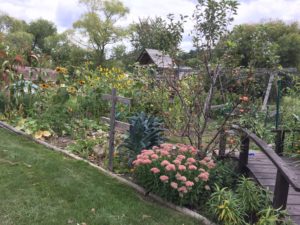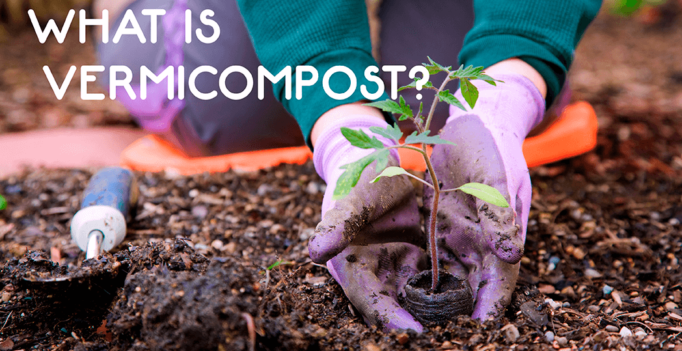So, you’re curious about vermicompost? Then you’ve come to the right place!
Here at The Squirm Firm, we aim to educate and equip people like you to become masters of their own environmental impact through worm composting.
Today we’ll share all there is to know about the dirty little secret that is changing the world one food scrap at a time. It’s the miracle of vermicompost, the black gold with value beyond measure.
Come find out for yourself what it is, where it comes from, and how to get your hands on some of your very own!
Vermi What?!
Vermicomposting is the term for using compost worms to naturally transform what would otherwise be waste materials, such as kitchen scraps and cardboard, into nutrient-rich nuggets of natural fertilizer.
Those nuggets of which I speak are called casts and may otherwise be known as poop, manure, excrement, and so forth. I’m sure you get the picture.
Vermicompost refers to the nearly homogeneous mixture of what looks like soil but is made of much more than regular old dirt. Vermicompost is a combination of worm casts, decomposing organic matter, bedding remnants, and millions upon millions of living, working microbes.
Vermi Who?!
Compost worms are those that thrive on decaying organic matter and the microorganisms that exist therein. Most often found in leaf piles or manure piles, these worms have a voracious appetite and are pooping machines!
Quite unlike the earthworms found in garden soil, compost worms differ in both appearance and behavior. The most popular species used for composting is Eisenia fetida, otherwise known as a red wiggler. Eisenia fetida are by far the most revered by worm composters who appreciate their easy-going behavior, low-maintenance lifestyle, and speed of reproduction as well as cast production.
Redworms, Lumbricus rubellus, are a similar worm often confused with red wigglers but still useful for worm composting. Blue worms, or Perionyx excavatus are yet another popular, though controversial, species often sold under the guise of “red worms”.
Though red wigglers are fairly easy to come by, your best bet is to source them from a reputable online distributor. They can ship them directly to your home with a live delivery guarantee in packages of one or more pounds.
Trying instead to pick them from your back-yard leaf pile may leave you with worms that are neither into composting nor into the buddies you’d want them to reproduce with.
 The Wonders of Worm Compost
The Wonders of Worm Compost
If black gold had just one other nickname it could be appropriately coined a “soil probiotic”. Added to even depleted soils, this completely organic, upcycled waste material urges the growth of billions of beneficial soil-dwelling microbes.
Soil microbes consume organic matter, and in turn, provide food for the next rung up the food chain–in our case, composting worms. Worms and other beneficial organisms enrich the earth and encourage a natural balance wherever they thrive.
Packed with both micro and macro nutrients, soil amended with vermicompost supports a chain reaction that gardeners can’t help but be giddy about! Plants grow stronger, grass stays greener, flowers bloom more abundantly, and deep root systems are strengthened by all they need to sustain life.
What once was trash becomes treasure when you give red wigglers a place to churn out vermicompost for your own growing success story.
How does Vermicompost Look and Feel?
Vermicompost goes through stages of completion that last months at a time.
At first, the mix of bedding, food, and casts in a new bin will seem rather coarse.
Shredded brown materials such as paper, leaves, and cardboard will be relatively large. The food scraps will be well-intact, unless blended. And ideally, everything should remain consistently moist.
Over time, worms consume the contents of the bin and deposit casts on and among the bedding, the edges of their enclosure, and even on their food. As casts accumulate, it begins to look as if soil, or even mud, is gathering in the bin.
Eventually, the bulk of the bedding and food scraps become a finely textured heterogeneous mixture. A mixture that is allowed to dry out a bit then sifted to remove any unfinished bits will result in a lovely loose, fine, and nearly granular product.
What does Vermicompost Smell Like?
Worm compost in a healthy system will have an almost pleasant earthy smell. It only smells bad if there is rotting or putrid food left unattended to by the worms in the bin.
Beware–some organic material will quickly give an off odor–in particular, cruciferous vegetables such as broccoli, cabbage, and cauliflower. Onions, garlic, and potatoes can also be major olfactory offenders in the worm bin and should be avoided in most cases.
What does Vermicompost Sound Like?
Really?! Well, just in sticking with the theme here, I decided I’d give it a shot. And in fact, there is something to be said for the sound of healthy worms actively living it up in a well-balanced environment.
Like I mentioned before, the contents of your worm bin should always remain moist. So, as red wigglers slip through the dark confines of bedding, food scraps, and castings to avoid the light of an opened lid you actually CAN hear them moving about!
Listen to the quiet plip of air pockets closing up behind a squirming worm or the juicy sounds of wet worms sliding through soil corridors. Maybe we can even hear the slurping sounds of hungry worms taking in microbes full of food particles. Grumbling tummies??
What does Vermicompost Taste Like?
Stop right there! Don’t do it! Though vermicompost is an ideal and completely natural food source for your back-yard plants–it is never to be consumed by humans.
Vermicompost vs. Other Compost Methods
Composting in general, is how we take advantage of the natural process of decomposition of organic matter to recycle what would otherwise be waste products from our home or gardens.
By accelerating the process, then using the end product as fertilizer, we can both upcycle and improve the quality of our soil at the same time.
From large-scale industrial plants to the apartment living bachelor, anyone and everyone can reduce their contribution to the waste stream through some type of composting.
Though there are also unique qualities, each composting method has these five basic requirements:
- Both brown and green organic materials
- Appropriate particle size
- Balanced moisture
- Aeration
- Proper temperature
However, it can be difficult to maintain all of these when you are composting outside, in harsh weather, or don’t have the space for something like a hot compost pile. Luckily, worm composting doesn’t have the same limitations as other methods often do.
In fact, vermicomposting lends itself to success and can benefit people in almost all living situations. These features of worm composting set it apart from other methods:
- Odor-free
- Suitable for Urban Environment/Indoors practice
- Produces over eight times as many microorganisms as the food source
- Quicker to finish
- Results in a more nutrient-dense product
- Rich in humic acid for the best soil conditioner
- Requires very little effort
As the most perfect (and FREE) fertilizer around, vermicompost comes packed with an ideal balance of minerals and water-soluble nutrients. You just can’t find a commercially made fertilizer this complete. Specifically, it’s the nitrogen, phosphorous, potassium, calcium, and magnesium abundant in vermicompost that yields incredibly verdant and resistant, edible and ornamental plants.
Making Vermicompost of Your Own
The decision to use worms to transform your waste into treasure is an exciting one. But the journey doesn’t stop there! There is a method of worm composting to suit anyone’s style.
Whether you opt for any of the commercially made worm composting systems, like the Worm Factory 360 I use, or create a homemade worm bin using a storage bin instead, you can have great success in reducing your waste output starting today!
Worms + Waste = Vermicompost
The process is truly as simple as the equation. The ultra low-maintenance red wiggler can be kept busy consuming food scraps and paper waste all year long in the comfort of your own home or backyard.
Nearly 10,000 composting worms can occupy even a relatively small worm composting bin, In as little as 18” square, a system like the Worm Factory 360 lets you produce enough vermicompost to boost all of your houseplants, your potted deck plants, your vegetable garden, your cutting garden, AND your lawn!
It only takes a pound of worms, the food scraps you already have, and a vermicomposting system that suits you best. Before long you’ll have black gold vermicompost and be the envy of all your earth-conscious friends and neighbors!
Happy worm composting holidays!


Our worms are the bomb. They reside in our dining room and eat our scraps. They even have favorite foods, apples and squash. They don’t party, at least we don’t hear them, so they do make wonderful house guests. Our son is also enjoying the fruits of his own worm farm. It seems a little challenging at first to get your worm farm going, but it is really easy, give it a try!
You’re definitely doing worms right, my friend! But didn’t you know, they party at night when nobody is listening! And, yes, it does take a little time to establish a nice big colony of red wigglers, but once they get going, they are incredibly hard working, quick to reproduce, and really are easy going housemates!